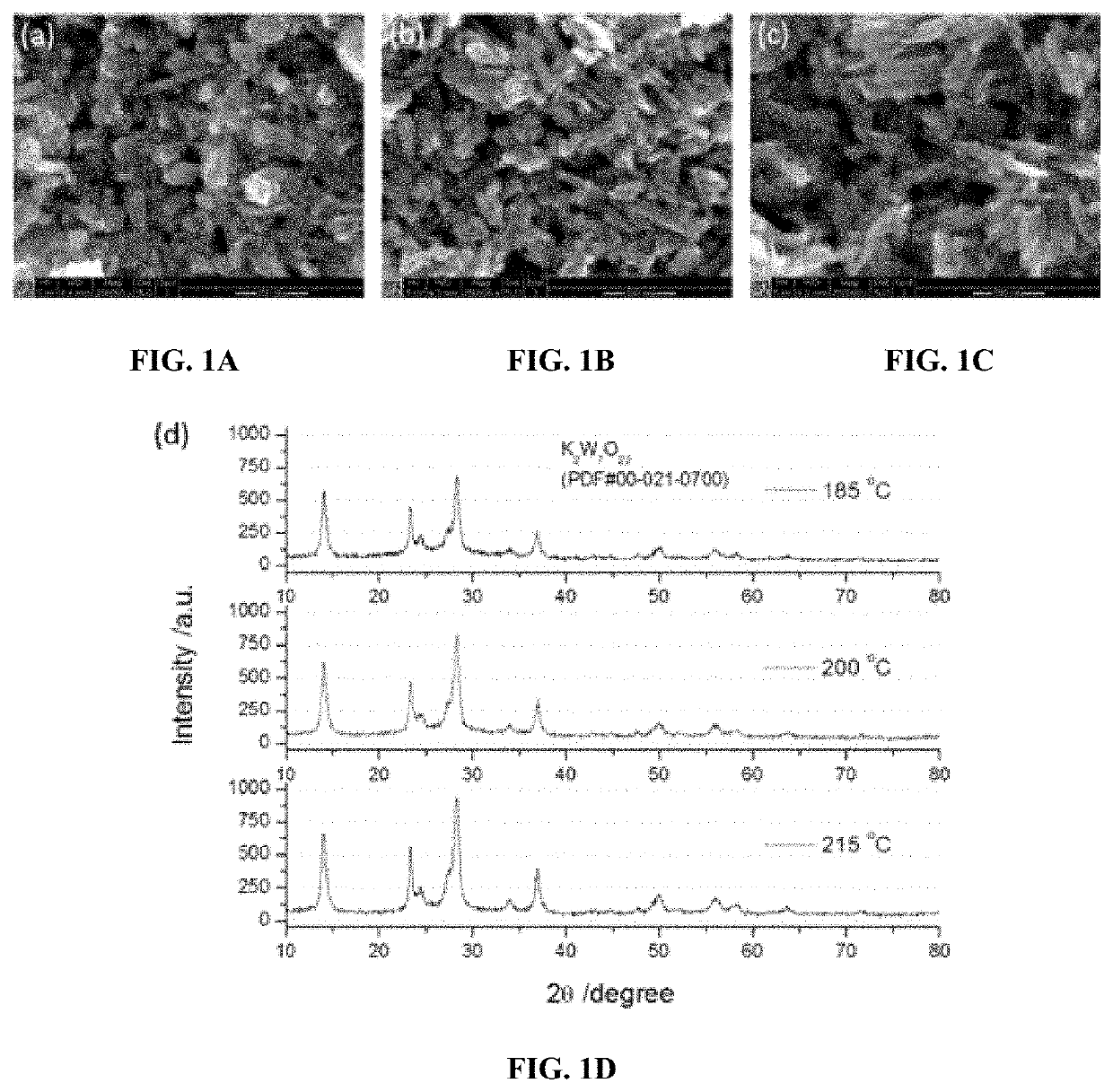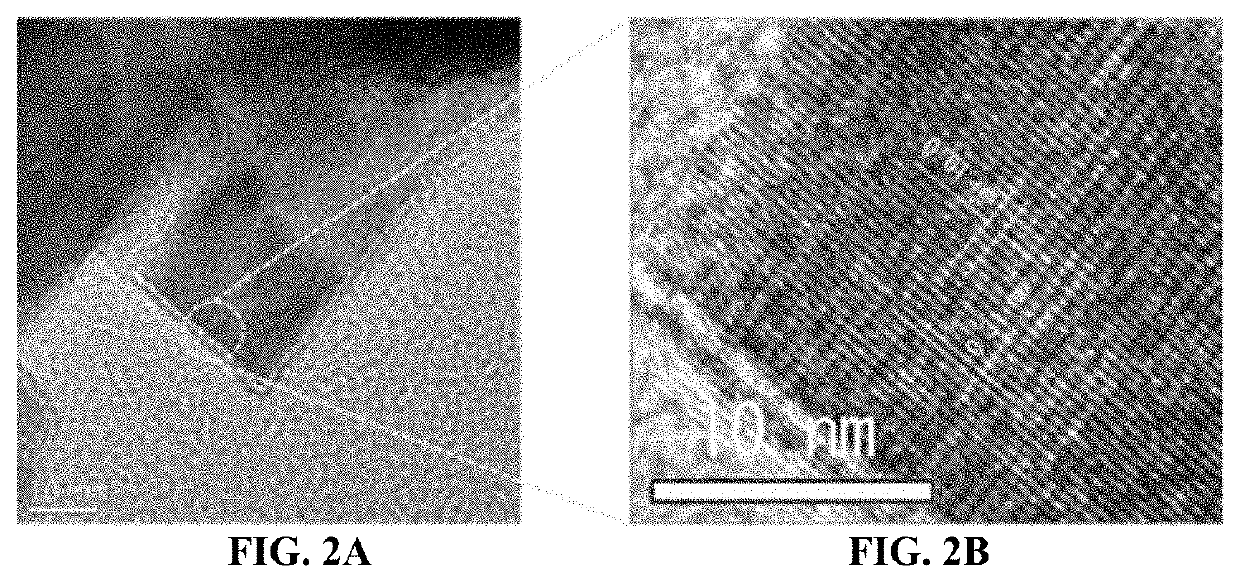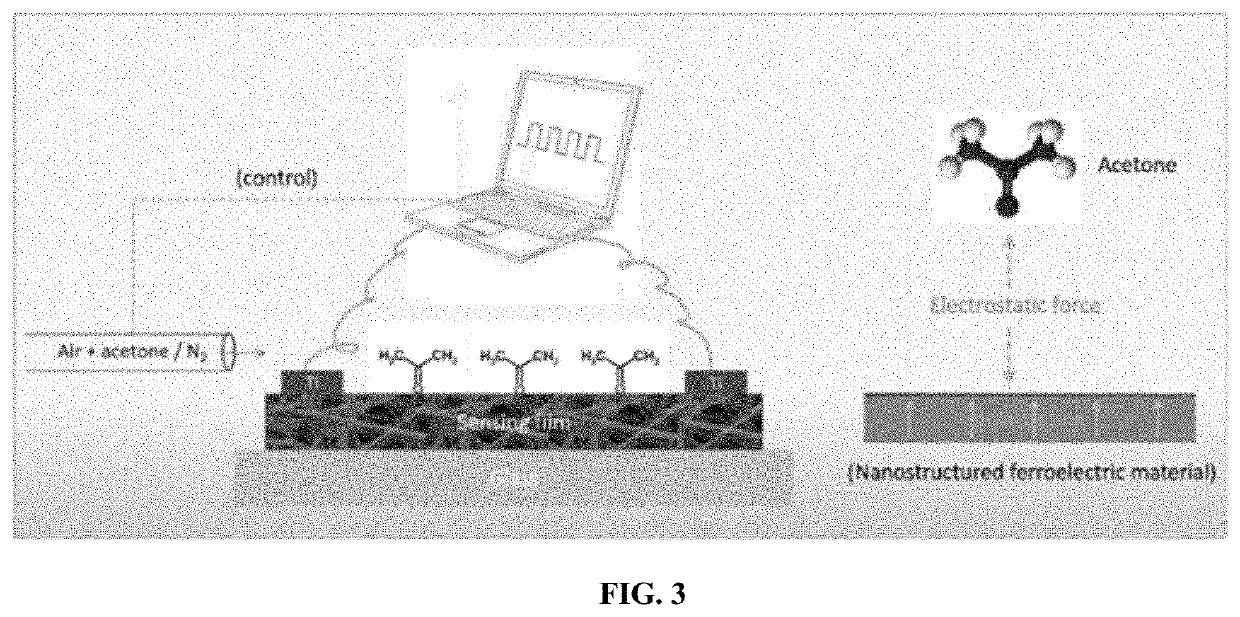Low cost diabetes breath analyzer based on nanostructured k2w7o22 material
a nanostructured, blood-pressure analyzer technology, applied in the direction of respiratory organ evaluation, instruments, diagnostic recording/measuring, etc., can solve the problems of invasive blood test, high cost, inconvenient blood test, etc., to improve treatment outcomes and reduce the risk of complications.
- Summary
- Abstract
- Description
- Claims
- Application Information
AI Technical Summary
Benefits of technology
Problems solved by technology
Method used
Image
Examples
embodiments
[0062]One embodiment of the present invention is a volatile organic compound (VOC) sensing device comprising: a volatile organic compound sensor component; a pressure sensor; and a microprocessor.
[0063]In a further embodiment of the present invention, the VOC sensor component is comprised of: a pair of electrodes; a moisture sensor; and nanostructured K2W7O22.
[0064]In another embodiment of the present invention, the microprocessor collects moisture data, reads an acetone signal, calculates VOC concentration, generates electromagnetic signals, and displays the concentration of acetone in the sample in ppm.
[0065]In some embodiments of the present invention the VOC is acetone.
[0066]In a further embodiment of the present invention, the device includes an electric fan to refresh the air within the device.
[0067]In another embodiment of the present invention, a desiccant is placed in or connected to the device.
[0068]In one embodiment, the present invention relates to a method for diagnosin...
example 1
Synthesis
[0075]The nanostructured K2W7O22 was synthesized with a hydrothermal method [17-19]. It uses a precursor solution containing Na2WO4, oxalic acid, K2SO4, and HCl. The composition of this material has been analyzed with XPS, revealing that the atom ratio of K:W:O is 2:7:22. Further study demonstrated that the geometric structure of the nanorods could be tuned by varying the temperature for hydrothermal growth; higher temperature led to longer nanorods with better crystallinity (FIG. 1). HR-TEM characterization indicated that the nanorods were single crystals with the axial lattice-fringe distance being 0.31 nm and the radial lattice-fringe distance being 0.61 nm (FIG. 2). However, due to the lack of information regarding the crystal structure of K2W7O22 in the literature, the lattice planes corresponding to these lattice-fringe distances cannot be determined at this stage.
example 2
ization of Acetone Sensing Performance
[0076]The acetone sensing performance of the materials optimized based on the investigation of the ferroelectric property and the simulation of acetone molecule adsorption on different exposed facets have been characterized with a programmable chemiresistive gas sensor measurement system (FIG. 3), which has been fully developed and has the capability of precisely controlling the acetone concentration, gas flow rate, and the humidity. [20, 21] In detail, the variation of acetone concentration from 0 ppm to 50 ppm is obtained by diluting 50 ppm pure acetone with dry air at the required ratio. The resistance change and response time of the sample are determined by measuring its resistance between the metal contacts with an electrometer (Keithley 6514) when the gas applied to the sensor film cycled between air with vapor and dry air.
Example 3: A New Material, Nanostructured K2W7O22 has been Developed
[0077]The performance of the nanostructured K2W7O2...
PUM
| Property | Measurement | Unit |
|---|---|---|
| temperatures | aaaaa | aaaaa |
| temperature | aaaaa | aaaaa |
| temperatures | aaaaa | aaaaa |
Abstract
Description
Claims
Application Information
 Login to View More
Login to View More - R&D
- Intellectual Property
- Life Sciences
- Materials
- Tech Scout
- Unparalleled Data Quality
- Higher Quality Content
- 60% Fewer Hallucinations
Browse by: Latest US Patents, China's latest patents, Technical Efficacy Thesaurus, Application Domain, Technology Topic, Popular Technical Reports.
© 2025 PatSnap. All rights reserved.Legal|Privacy policy|Modern Slavery Act Transparency Statement|Sitemap|About US| Contact US: help@patsnap.com



